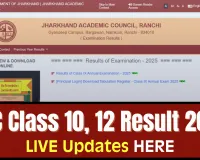Personal Loan or Education Loan? Choose Your Academic Funding Wisely
.png)
In May 2025, amid rising education costs and interest rates, students in India are increasingly evaluating whether to fund their academic journey with a personal loan or an education loan. A comparison has shed light on the key differences between these two credit avenues, helping borrowers understand how each option aligns with their financial and academic goals.
As the academic season begins, Indian students and families face a critical financing decision: whether to opt for an education loan or a personal loan. While both provide access to funds, their structure and long-term financial implications vary significantly.
Education loans, designed specifically for academic use, typically offer lower interest rates, longer repayment tenures (up to 15 years), and a moratorium period — a grace window that allows students to start repayment after completing their course and gaining employment. These loans require comprehensive documentation, including admission confirmation and course fee schedules. Often, a co-applicant (usually a parent or guardian) and collateral may be necessary for higher loan amounts.
Personal loans, on the other hand, offer greater flexibility and faster processing but come at the cost of higher interest rates and shorter repayment windows. They are unsecured, rarely require collateral, and are usually sanctioned based on income and credit score — making them suitable for urgent or smaller educational needs.
Ankit Mehra, CEO and Co-Founder of GyanDhan, told Mint, "Personal loans feel convenient due to their speed and minimal paperwork, education loans are purpose-built and more student-centric. Education loans come with a longer repayment period of up to 15 years, making the EMIs affordable. They also come with a moratorium period, allowing you to defer repayments during course completion and at the start of employment."
He added, "If the amount is small and you have an immediate requirement, a personal loan is more practical. It's quicker to disburse and needs less documentation. But you'll be stuck with higher interest rates and a shorter repayment time, which can be financially draining as you're just starting."
Another critical consideration is tax. Under Section 80E of the Income Tax Act, the interest paid on education loans is tax-deductible — a benefit personal loans do not typically provide unless used for specific tax-qualifying purposes like home renovation.
According to recent trends tracked by Mint, interest rates on personal loans have been increasing, making them less attractive for long-term commitments such as education. Additionally, as banks tighten lending norms, the documentation-heavy but structured nature of education loans may offer more stability and peace of mind to student borrowers.
Experts suggest that the decision should be guided by the borrower's financial situation, urgency, future earning potential, and comfort with repayment obligations. With India’s higher education sector expanding and tuition inflation on the rise, strategic loan planning has become as essential as academic planning itself.


.png)



.png)
.png)

.jpg)
.jpg)
.jpg)
